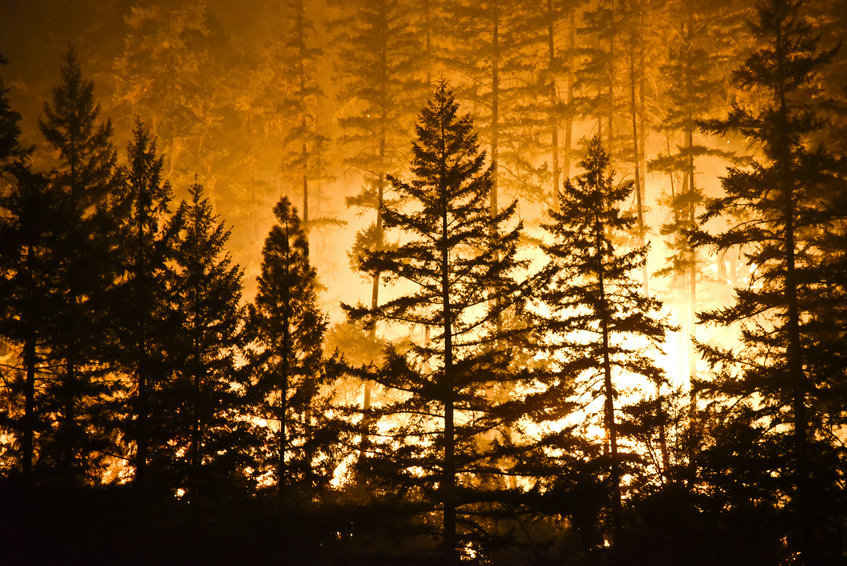California's cap-and-trade program, which began in 2013, allows businesses to offset carbon emissions by purchasing a limited number of credits, the majority of which are used to prevent trees that store carbon dioxide from being cut down. California and a group of East Coast states were the first in the United States to develop such a system. Similar initiatives can be found in the European Union, South Korea, and China.
However, wildfires along the West Coast have consumed up to 6.8 million metric tons of stored carbon dioxide in forests enrolled in the program over the last two years, according to preliminary estimates by the Climate Trust, a Portland, Ore.-based nonprofit that manages carbon offset acquisition projects.
That is more than one-fifth of the 29 million tons set aside by California regulators so far for potential losses due to wildfires or insects over a century. The state's Air Resources Board designated that sum as a buffer for the program, which currently aims to save 156 million tons of forest carbon credits.
Researchers are now warning that the state's carbon dioxide credit stockpile is rapidly depleting due to the increasing size and intensity of wildfires. Two of California's largest wildfires have burned in the last two years, and 14 of the top 20 have occurred in the last decade.
"These risks are fairly significant, and they are likely to be much greater than what the buffer pool currently has," said William Anderegg, associate professor of biology at the University of Utah. He was a co-author on a November study that predicted the area of U.S. forests affected by fire would increase by a factor of 14 by the end of the century.
According to a spokesman for the California Air Resources Board, the program is protected in part because California businesses can purchase offsets in forests in 29 states ranging from Alaska to Maine. He also stated that as more projects are added, the size of the forest buffer will grow.
In an email, spokesman Dave Clegern stated that the agency "will use the most up-to-date information and peer-reviewed science to ensure we are continually improving how the...program contributes to California's overall climate effort."
Mr. Clegern stated that the board's protocol requires carbon forestry projects to engage in activities to reduce fire risk and become more resilient, such as maintaining a healthy mix of tree species and ages.
California's cap-and-trade program establishes a budget of air-emission allowances that businesses can buy and sell to obtain the right to pollute. Companies can buy offset credits to their emissions, such as in forests, as those allowances dwindle over time, allowing them to generate more pollution than they would otherwise be allowed. The credits, each worth one metric ton of CO2, are part of California's goal to reduce greenhouse gas emissions by 40 percent below 1990 levels by 2030 in order to combat climate change.
According to researchers, Oregon has suffered some of the greatest damage to forest credits. According to researchers at CarbonPlan, a nonprofit focused on the scientific integrity of climate projects, the 204,469-acre Lionshead Fire in 2020 severely damaged a carbon capture forestry project there, potentially resulting in the loss of more than one million credits.
Last summer, the 413,717-acre Bootleg Fire in Oregon also harmed another carbon project, potentially wiping out another one million credits, according to CarbonPlan researchers. Developers of carbon projects in California have 23 months under California law to provide verified estimates of credit losses.
CarbonPlan scientists estimate that approximately 158,000 acres of forest enrolled in California's offsets program will be burned in 2021.
"The impact of the 2020 and 2021 fire seasons indicates to us that the buffer pool is severely undercapitalized and, as a result, unable to insure the offsets program's carbon for a 100-year period," said Danny Cullenward, a climate researcher and CarbonPlan policy director.
According to air board officials, two projects totaling 1.1 million credits have had to be removed from the buffer pool due to fire damage. However, they acknowledged that more may be removed as a result of the destructive fires of the previous two years.
Cap-and-trade supporters argue that, despite the damage caused by wildfires, the program still provides significant benefits in the fight against climate change. "No system is perfect, but time is running out, and we need to use all of the tools we have right now," said Julius Pasay, interim executive director of the Climate Trust.













